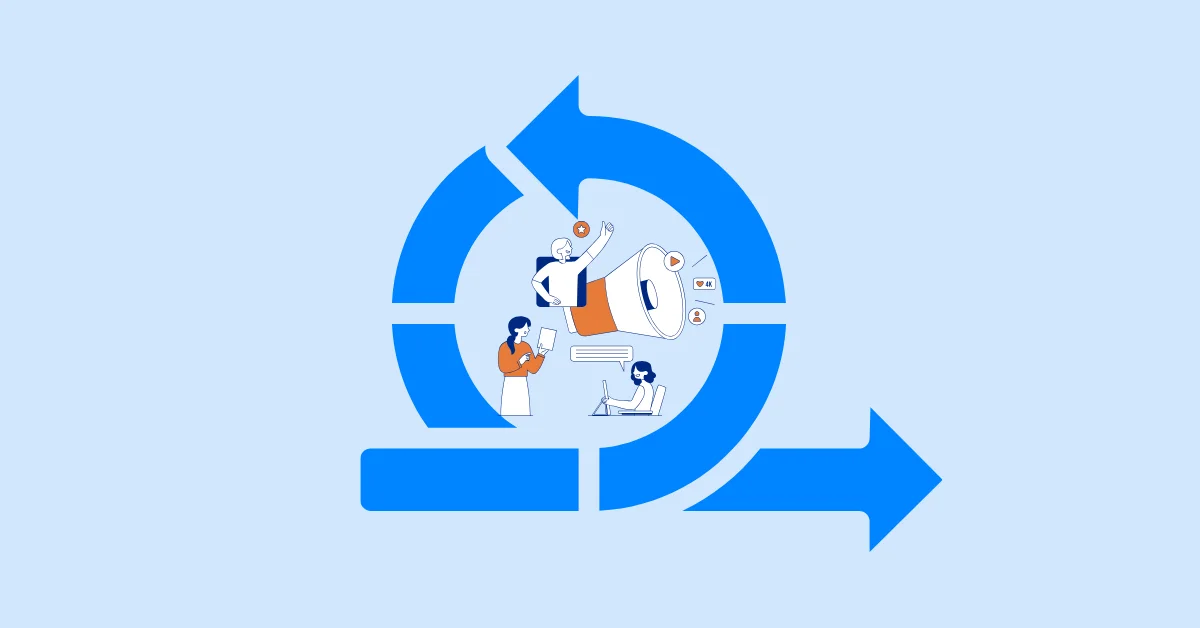We Tried Agile Marketing in Our Team… Here’s What Really Happened
See how Agile Marketing works in our team, what succeeded, what didn’t, and the valuable lessons we learned along the way to improve our process.
Agile marketing has been getting a lot of attention lately, especially as more tech companies use Agile practices to boost their development teams. With sprints, constant feedback, and iterative improvements driving success in tech, it made us wonder: Why not apply these ideas to marketing?
We decided to bring the same Agile principles that tech teams rely on into our marketing efforts, to speed up our processes, improve collaboration, and seeing results faster.
In this post, we’ll walk you through our experience of running Agile to our marketing team, what worked, what didn’t, and the valuable lessons we picked up along the way. Let’s dive in!
The Reality of Marketing vs Tech in Agile
When most people hear "Agile," they immediately think of tech and development teams. Agile is all about speed — developers ship products quickly, get instant feedback, and make changes fast.
But when you look at traditional marketing, the pace is quite different. Marketing often relies on long-term planning, large campaigns, and methodical execution. While this approach can work in certain situations, it doesn’t quite match the speed and adaptability that modern marketing demands.

For example, when you’re writing SEO-focused content or launching a social media campaign, the results aren’t immediate. It can take weeks, even months, to see the fruits of your labor, which can feel frustrating when compared to the quick, data-driven feedback loops of tech teams using Agile.
This made us wonder: Could we apply the speed of Agile to marketing? Could we break down these slow-moving tasks into actionable steps and see faster results?
Why We Decided to Try Agile Marketing
The challenge with traditional marketing was obvious — it just wasn’t moving fast enough for the speed we needed. While tech teams around us were rapidly launching products, gathering feedback, and iterating in real-time, marketing often felt like a slow and steady process that involved long-term planning followed by months of waiting for results.
This led us to ask a critical question: Why can’t marketing work with the same speed and flexibility as tech?
We needed a way to speed up our processes, collaborate more effectively, and react quickly to shifts in the market. That’s when we decided to give Agile marketing a try.
Our goal was simple: break down big tasks into smaller, manageable steps, improve team collaboration, and get results faster. Instead of waiting months for the impact of a campaign, we wanted to work in shorter cycles, test along the way, and adjust based on real-time feedback.
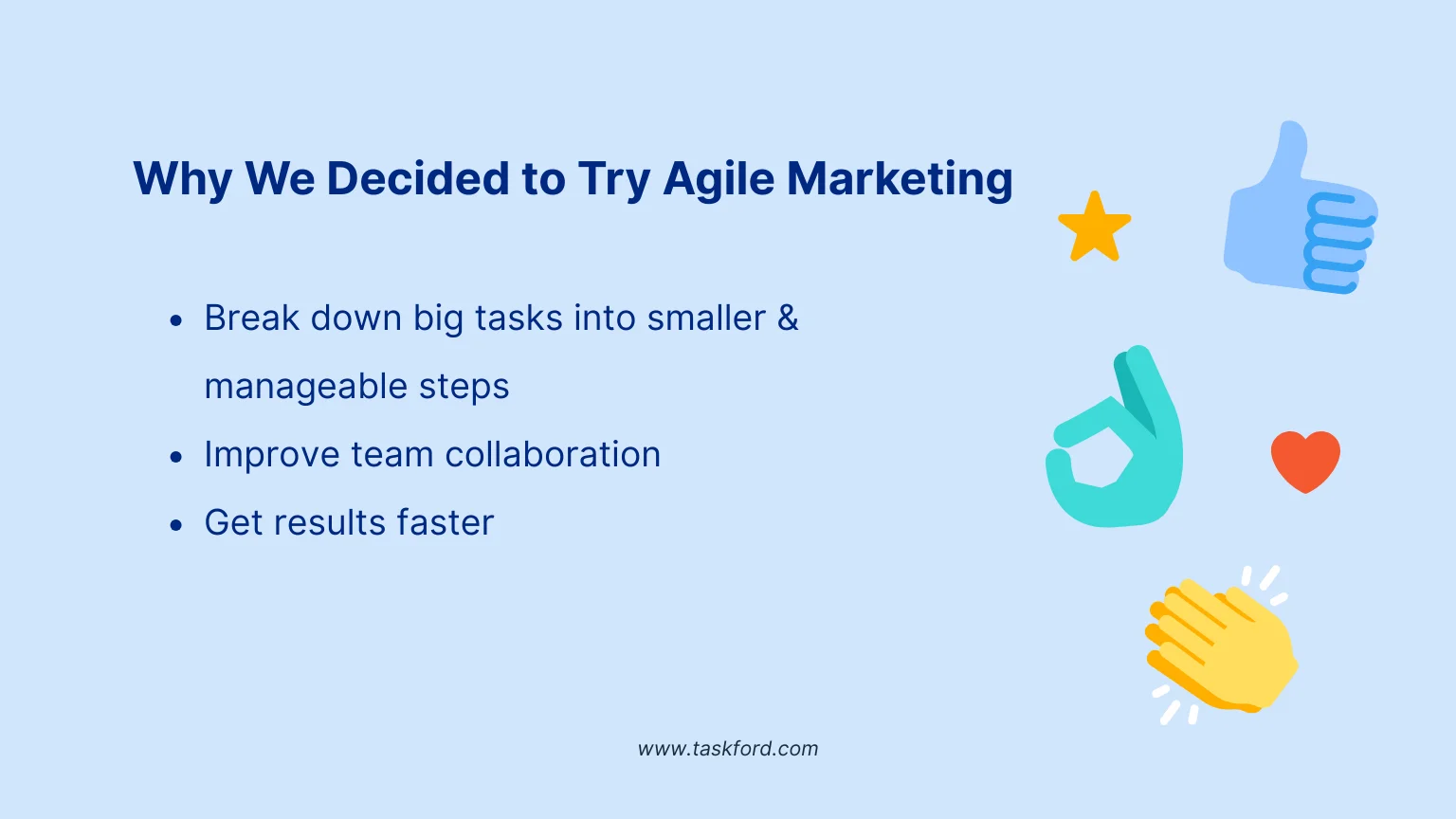
What is Agile Marketing?
Agile marketing is an approach to marketing that applies the principles of agile methodology (originally designed for software development) to marketing practices. It focuses on delivering faster, more flexible, and iterative marketing strategies.
Instead of traditional marketing, long-term planning, and executing campaigns in large batches, agile marketing breaks projects into smaller, more manageable tasks that can be completed quickly. Teams work in short cycles, known as sprints (typically 1-2 weeks), to test, measure, and adjust their efforts based on feedback and real-time data.
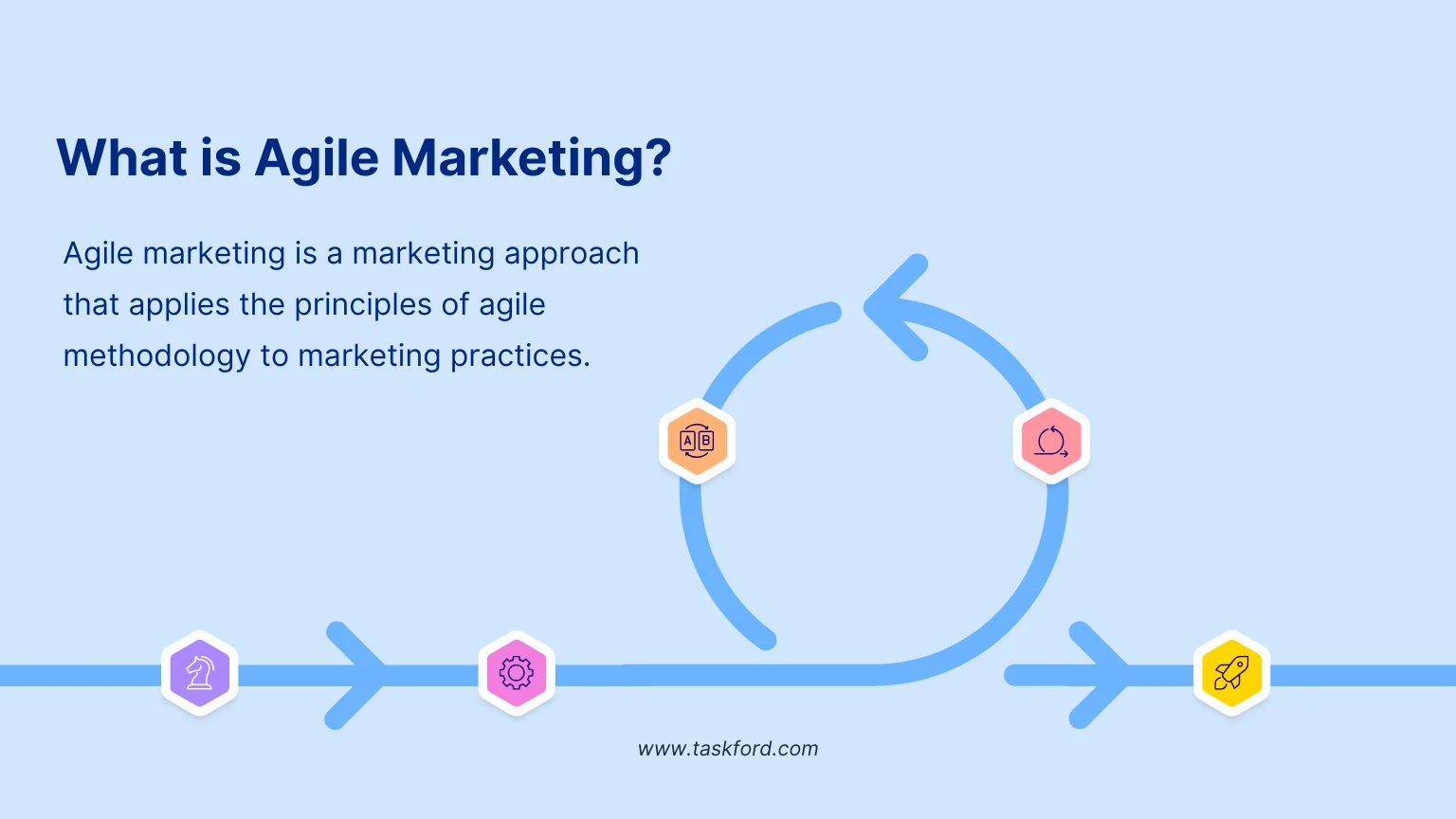
Agile marketing is also guided by its own Agile Marketing Manifesto, created in 2012 by a group of marketing professionals. This manifesto emphasizes values like customer collaboration, embracing change, and prioritizing actionable marketing campaigns over long-term plans. It serves as a guide for teams looking to become more adaptable and efficient in their marketing approach.
Benefits of Agile Marketing
Agile marketing offers several key benefits that can help marketing teams move faster, collaborate better, and stay more adaptable. Here are some of the main advantages:
1. Faster Execution
Agile in marketing allows teams to work in short, focused sprints, which speeds up the delivery of campaigns and content. Instead of waiting months to see results, teams can quickly implement changes, test new ideas, and iterate based on immediate feedback.
2. Increased Flexibility
With Agile, marketing teams can easily pivot their strategies in response to new data, trends, or shifts in the market. This flexibility helps teams stay relevant and responsive to changes in consumer behavior or industry conditions.
3. Improved Focus on Priorities
Besides that, this encourages teams to break down large projects into smaller, more manageable tasks. This allows teams to prioritize high-impact activities and stay focused on what matters most, resulting in more efficient use of resources.
4. Faster Response to Market Changes
Agile marketing’s ability to adapt quickly to new information or shifts in the market is a major advantage. Whether it’s a sudden change in consumer behavior, a new competitor, or a trending topic, teams can adjust their approach and respond almost immediately.
Agile Marketing Frameworks for Effective Teamwork
To successfully implement Agile in marketing, teams can choose from several frameworks, each offering unique benefits depending on the project type and team needs. Here are some of the most commonly used frameworks:
1. Scrum
Scrum is all about working in short, focused sprints (usually 1-2 weeks). Teams tackle specific tasks, review the results, and adjust for the next sprint. It's perfect for repeatable tasks like content creation or campaign launches, where structure and deadlines are key.
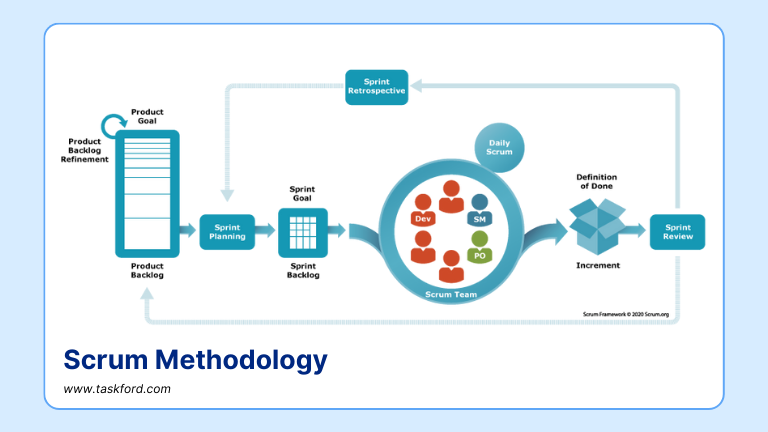
2. Kanban
Kanban helps teams visualize their tasks and work in a continuous flow. Instead of fixed sprints, tasks move through stages like "To Do," "In Progress," and "Completed." This is great for teams that handle ongoing work, like social media management or email campaigns.
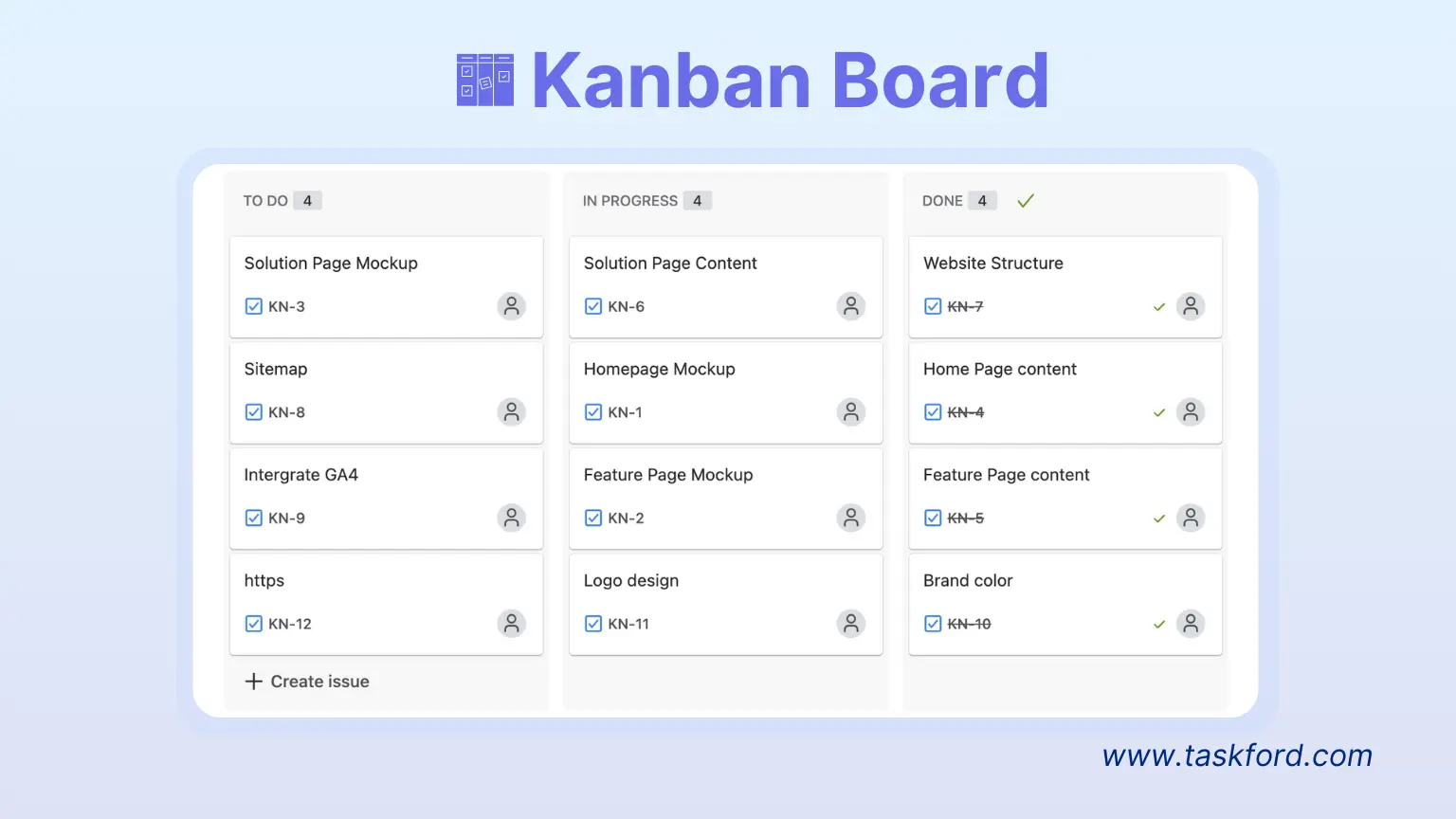
3. Lean
Lean marketing focuses on maximizing value and cutting out waste. It’s about doing more with less — focusing on high-impact tasks that directly serve the customer and improving processes along the way.
4. Scrumban
Scrumban combines the best of Scrum and Kanban. It uses Scrum’s sprints for structure but allows the flexibility of Kanban’s continuous workflow. Ideal for teams juggling short-term projects and long-term goals, it balances both flexibility and deadlines.
How We Adapted Agile to Fit Our Marketing Work
Implementing Agile in a marketing team might seem overwhelming at first, but with the right approach, it's entirely achievable. Here’s a step-by-step guide to help you get started:
Step 1: Define Your Objectives
Before diving into Agile marketing, it's crucial to understand your goals. Start by setting clear, actionable objectives that align with your overall business strategy. Break these objectives into small, manageable tasks that can be completed in short sprints.
For example, if your goal is to increase website traffic, your objectives could include:
- Writing SEO-optimized blog posts
- Conducting keyword research
- Running targeted social media ads
These objectives should be flexible but measurable, allowing you to quickly adjust based on what’s working and what’s not.
Step 2: Break Tasks into Smaller Pieces
Agile is all about breaking big tasks into smaller, manageable chunks. For marketing, this might mean breaking down a large campaign into smaller parts, like creating landing pages, writing copy, designing visuals, or setting up email campaigns.
Instead of saying “increase traffic,” your sprint task could be something like “publish 2 blog posts and review keyword strategy this week.” This makes everything more achievable and less overwhelming.
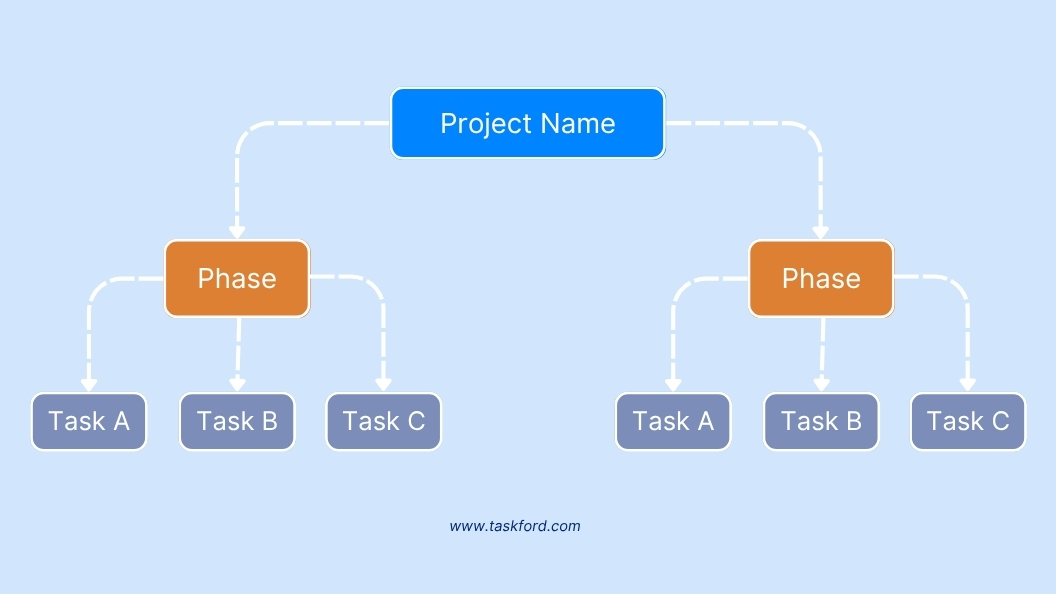
Step 3: Set Short, Focused Sprints
We adopted short sprints, typically lasting 2-4 weeks. At the beginning of each sprint, we hold a Sprint Planning meeting where the team decides what tasks to prioritize and what we aim to accomplish. This ensures everyone is aligned on the goals for the sprint and helps us stay on track.
For example:
- Week 1 Sprint: Write 3 blog posts on SEO trends
- Week 2 Sprint: Do a keyword analysis and tweak the SEO strategy
- Week 3 Sprint: Launch and track results of a targeted email campaign
By setting clear goals for each sprint, we maintain focus and make steady progress without getting overwhelmed by larger projects.
Step 4: Hold Daily Stand-ups
Daily standup are quick meetings (usually 15 minutes) to keep everyone on track. Each team member shares what they’re working on, any issues they’re facing, and what they plan to do next.
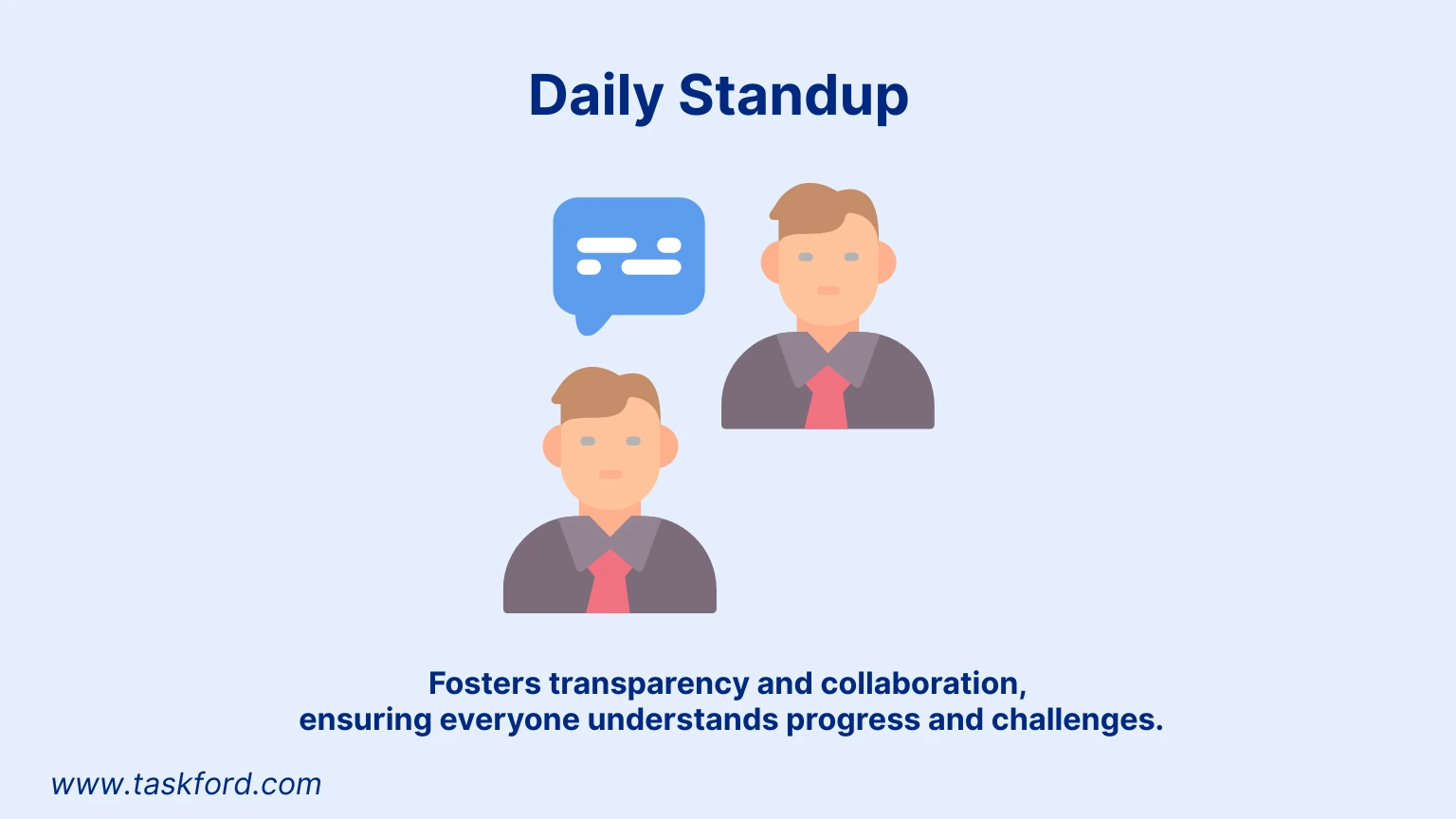
For example:
- "Today, I’m analyzing the performance of last week’s blog posts."
- "I’m researching new keywords for our next campaign."
- "I’m having trouble with the email automation tool, and I need help from the tech team."
These quick check-ins help everyone stay aligned and solve problems fast.
Step 5: Collaborate Across Teams
Marketing doesn’t work in isolation, so it’s crucial to collaborate with other teams like sales, development, and customer support. Regular communication ensures everyone is working toward the same goals and helps improve the overall results.
For example, the marketing and sales teams can work together to refine the messaging for an upcoming product launch, while design and tech teams can collaborate on building landing pages or customer-facing content.
Step 6: Visualizing Tasks with Agile Tools
To make Agile methodology in marketing work, you need the right tools in place. Without them, things can quickly get messy. For us, we rely on TaskFord, a solid project management platform that has everything we need.
The best part? It's incredibly user-friendly, especially for a non-technical team like ours. Especially, the Kanban board lets us see where each task stands — whether it’s in the "To Do" column, "In Progress," "Done," or "Stuck"
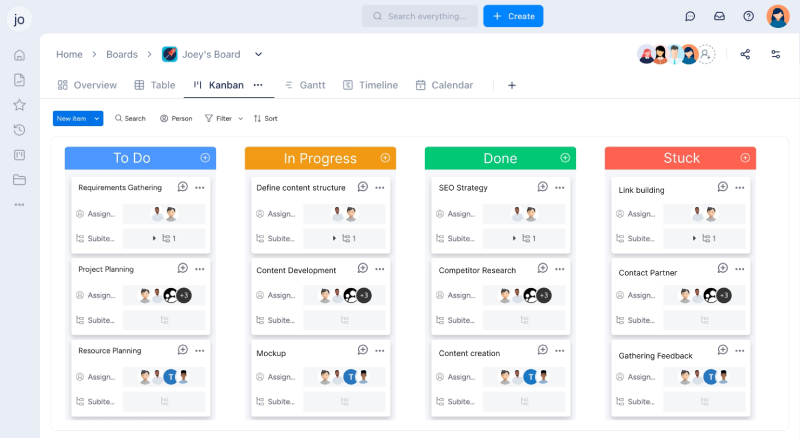
It’s like a visual map of our entire workflow. It keeps things organized and gives everyone on the team a clear idea of what’s happening and what needs attention next.
Step 7: Regular Feedback Loops
In Agile, regular feedback is key. Instead of waiting months to see the results of a campaign, we gather feedback after each sprint. We review what worked, what didn’t, and how we can improve moving forward. By using real-time data, we can make quick adjustments and ensure our strategies are on track, allowing us to continuously improve our marketing efforts and stay aligned with our goals.
By following these steps, we’ve made Agile work for our marketing team, helping us stay organized, collaborate better, and see quicker results.
What We Learned - What Not to Do and How to Do It Right
So, what did we learn through all of this? Well, we made some mistakes, but we also discovered a lot about how to make Agile work for marketing:
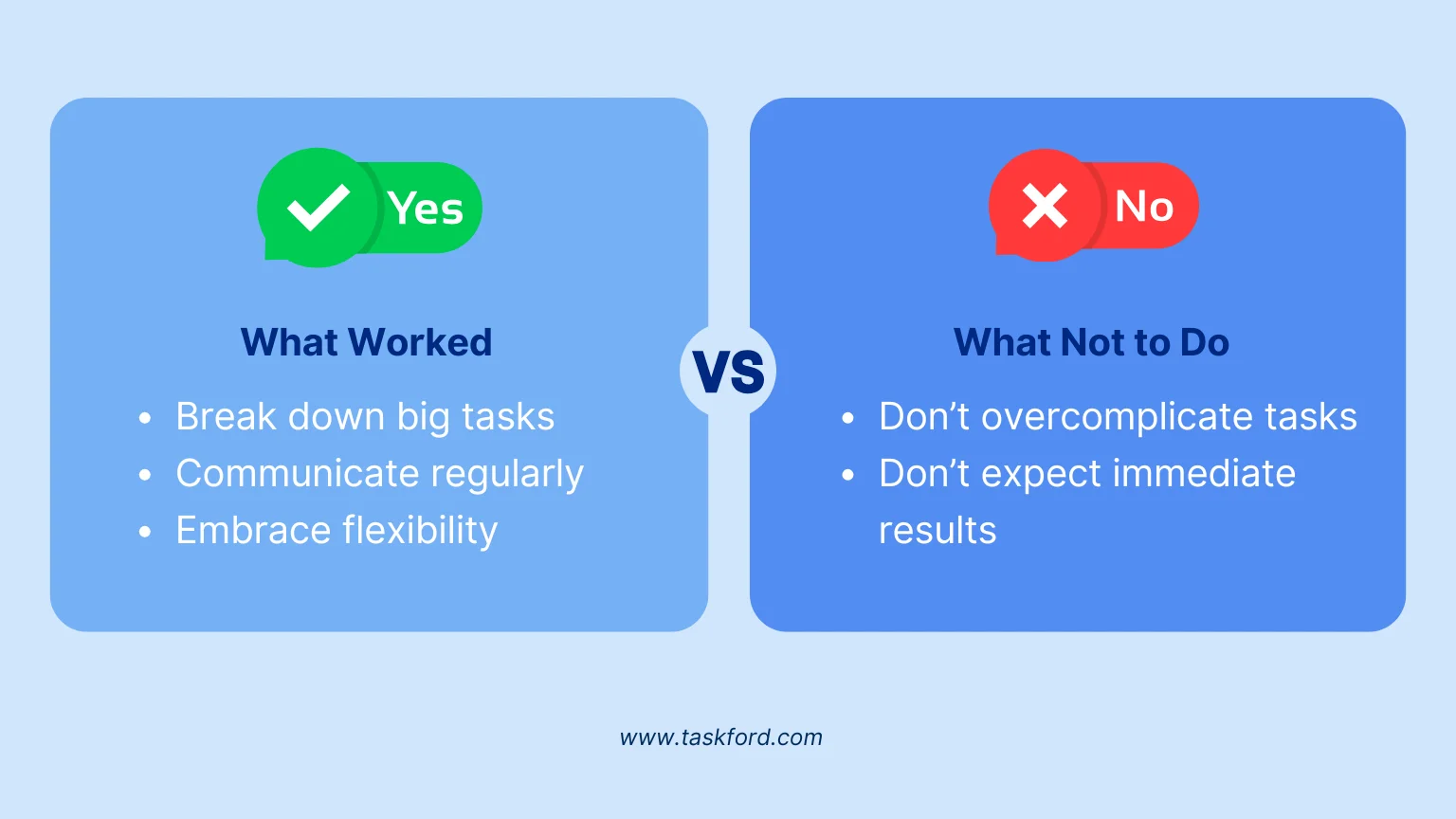
What Not to Do:
- Don’t overcomplicate tasks: We learned that breaking things down too much can cause unnecessary complexity. Keep things focused and manageable.
- Don’t expect immediate results: Agile marketing helps improve efficiency, but it doesn’t deliver results overnight. Be patient and allow time for strategies to take effect.
What Worked:
- Break down big tasks: Focus on small, actionable tasks that you can complete in a sprint.
- Communicate regularly: Keep the communication flowing, especially between teams.
- Embrace flexibility: Be ready to adjust plans as needed based on what you learn during each sprint.
By focusing on these practices, we were able to make Agile work for us and improve our marketing efforts step by step.
Final Thoughts
Switching to Agile marketing has really worked for us. It wasn’t always smooth sailing, but it’s helped us move faster, stay organized, and make smarter decisions based on real-time feedback. The biggest thing we’ve learned? Keep things simple, stay flexible, and focus on small, doable tasks.
If you’re thinking about trying Agile in your marketing, just dive in. Start small, don’t rush, and adjust as you go. With the right approach, Agile can help you get things done more efficiently and deliver results that actually matter.
Related Reading:,
- Agile Project Management: The Basic for Beginners.
- Agile Capacity Planning : How to Match Team Velocity with Real-World Workloads.
- Agile Project Management Plan: How to Build It Effectively
- Agile Project Management Software: How It Helps Track Developer Performance: 5 Tools to Know
Making work simpler,
smarter, and more connected
Join our waitlist and be notified first.

Related Blog
Subscribe for Expert Tips
Unlock expert insights and stay ahead with TaskFord. Sign up now to receive valuable tips, strategies, and updates directly in your inbox.

